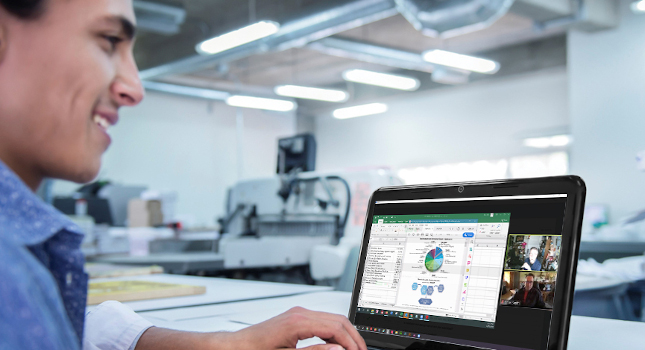Although current circumstances prevent face-to-face meetings such as those for process hazard analysis (PHA), they can be accomplished online

Why virtual meetings?
Critical infrastructure needs to keep operating even in the face of the COVID-19 pandemic. Many companies are continuing to operate with limited onsite resources pushing most staff to remote support personnel. Social distancing and working from home present challenges. People are using ingenuity to remove those hurdles and take advantage of these hours at home to focus on management of change issues, process hazard analyses (PHAs), cybersecurity assessments, engineering and design reviews, standards development, action item closure and training. Industry is learning how to work differently, doing it successfully, increasing efficiency every day and contributing to the safe operation of high hazard processes.
Before the meeting
Like any other project, a kickoff meeting will be required. More than ever it is important to talk through attendee contact information, availability, remote information technology (IT) access, availability and workflow. Communication of the meeting plan is key. Like a face–to–face PHA project, it will be necessary to create an online repository to collect and share process safety information. Online meeting time and discussions will be limited, so meeting preparation outside the meeting maximizes the material covered during the online meetings.
Small group meetings, such as those between a PHA facilitator and process engineer or operator to draft consequences in the worksheets, increase the focus and efficiency of the full team on developing scenarios and risk ranking them together. Consider short team meetings up front to communicate assignments best done outside the team meeting as a form of team member preparation, such as reviewing the highlighted piping and instrumentation diagrams (P&IDs) and becoming familiar with what is in each node.
Requirements for the online environment
Define the requirements for a quality internet connection for all attendees, especially if video is to be used. Choose a software package that allows sharing of screens for all participants (e.g., WebEx, Microsoft Teams, Skype, etc.). Loaner laptops need to be provided to those who don’t otherwise have access to a laptop. These laptops should be preloaded with the necessary remote connectivity tools.
Have a camera for all attendees, not just one for the person projecting if attendees are in the same room. This lets the facilitator recognize when people may not be paying attention or may need a break. However, the use of video may create bandwidth problems and may not be possible. Test the software prior to an actual meeting. Expect some to have connectivity and login issues.
Time spent by the presenter considering the content participants will need to see and the best method for them to engage is time well invested. If it is on the screen, pre-check the best screen size and enlargement settings with a peer; close material in a spreadsheet that is not relevant. Participants see exactly what the presenter sees on their computer screen. Larger computer screens present more content in a clearer manner than small desktop PC screens.
If the meeting presenter has two PC screens, it is possible to set up a team invitation in two different web meeting applications (e.g., Skype and WebEx) and run them simultaneously. The team can view engineering documentation such as P&IDs on one screen, and the meeting study worksheets or meeting notes on the second screen.
Conducting the meeting
During meetings, site attendees may be in a single room (with social distancing) or in separate locations. Online meetings can be more challenging because they require a great deal of individual participant effort to remain focused. Therefore, rather than face-to-face sessions that last all day and all week, use shorter sessions per day.
Consider two-hour sessions two to three times per day, and only three to four days per week. Take roll calls at the start of each session. While such a schedule increases the study’s duration, participants may find it easier and it can enhance the quality of the input they provide. Schedules set up in this manner also enable participants to keep up with remote site support, email and other activities.
The facilitator also should use multiple screens and share an application rather than the desktop or screen. This makes it easier to pull up reference files without disrupting the screen for the team and prevents others from seeing email popups.
Only one person should talk at a time with others muted. Expect some awkward silence while waiting for responses.
Identify the client subject matter expert for each node or topic and make them the “point person” for discussion on that node or topic. This person should be knowledgeable about most hazards and delegate questions to other members of the team.
With Microsoft Teams, it is possible to share real–time document updates (e.g., a parking lot list) with all participants as they’re being made. This also helps keep people engaged.
The facilitator also should be purposeful about calling the names of people who can speak about a topic, or those who have gone silent.
After the meeting
Reports can be prepared, reviewed and commented on by the team in the traditional manner.
Kathy Shell is executive vice president of strategic client partnerships at aeSolutions;Laura Ankrom is senior manager of process safety at aeSolutions in Ohio; Craig Shell is vice president of engineering at aeSolutions in Ohio; Jacob Morella is technical project team manager at aeSolutions; Jacob Lindler is process risk management principal specialist at aeSolutions; Judith Lesslie is senior principal specialist at aeSolutions; Paul Gruhn is global functional safety consultant for aeSolutions.
Edited by Jack Smith, content manager, Control Engineering, CFE Media, [email protected].
KEYWORDS: COVID-19, Coronavirus
A kickoff meeting will be required to nail down the deliverables and agree to the workflow.
Define the requirements for a quality internet connection for all attendees, especially if video is to be used.
The facilitator should use multiple screens and share an application, not the desktop or screen.
CONSIDER THIS
Consider these steps when planning for a virtual process hazard analysis meeting.



